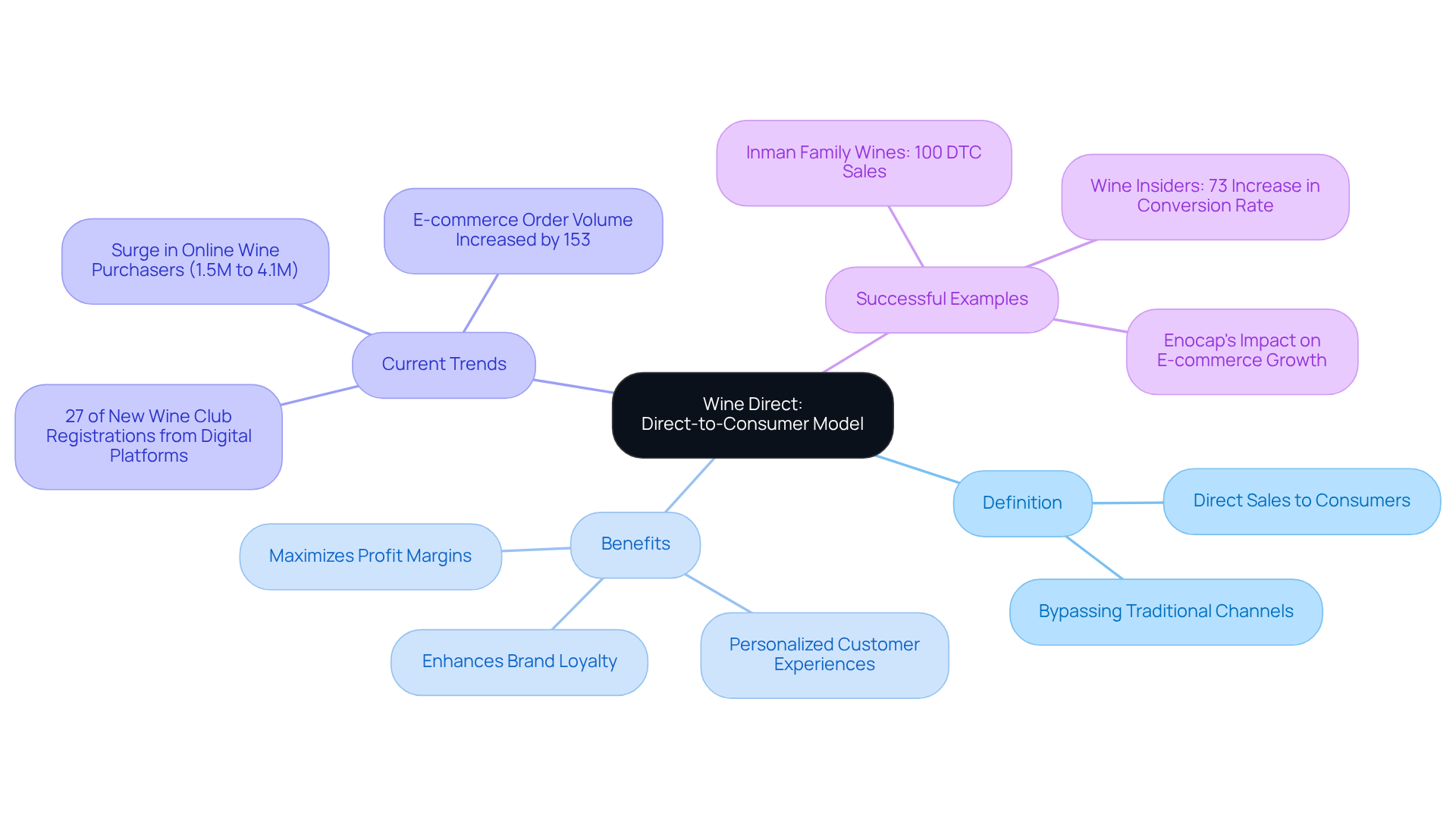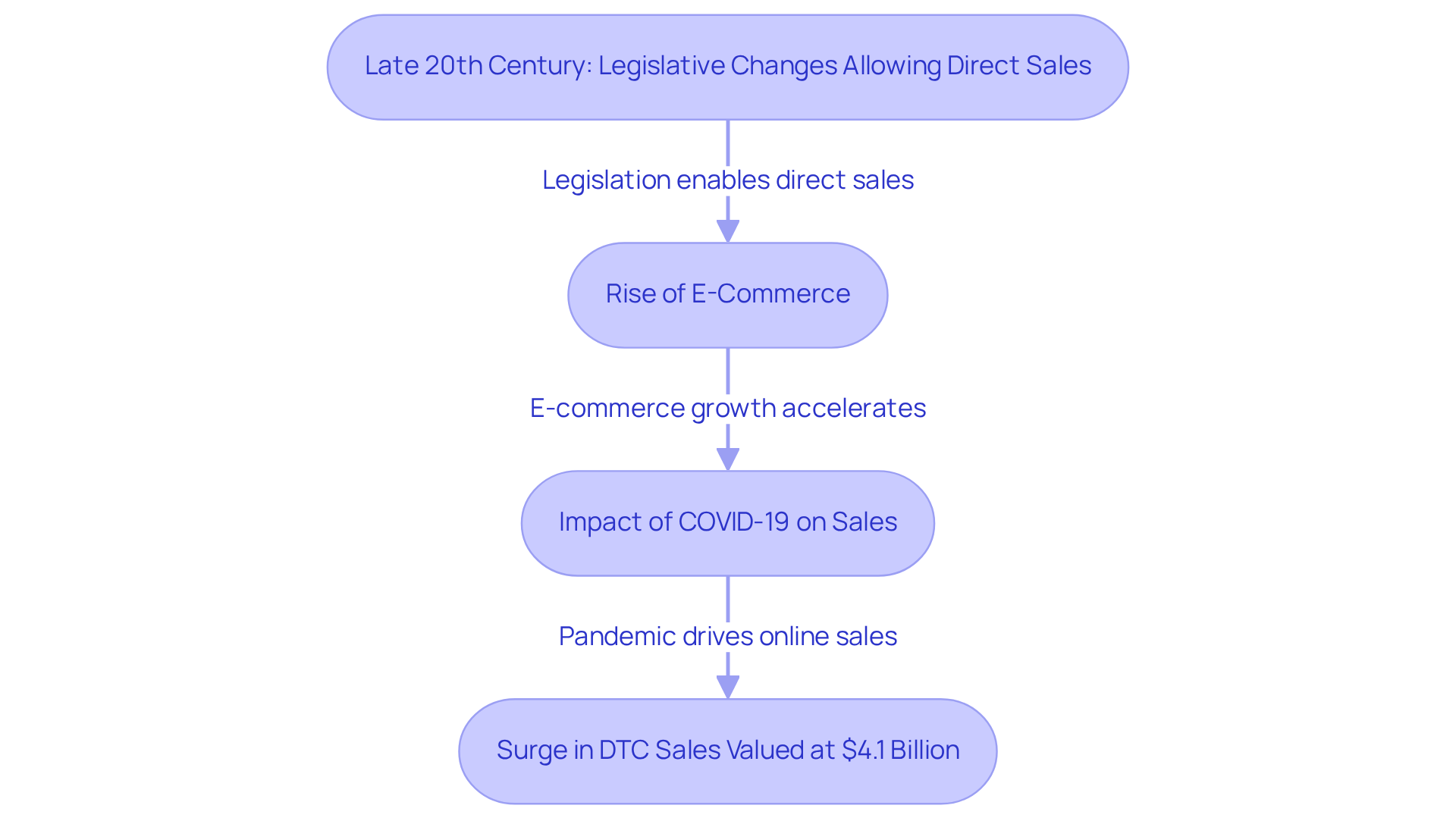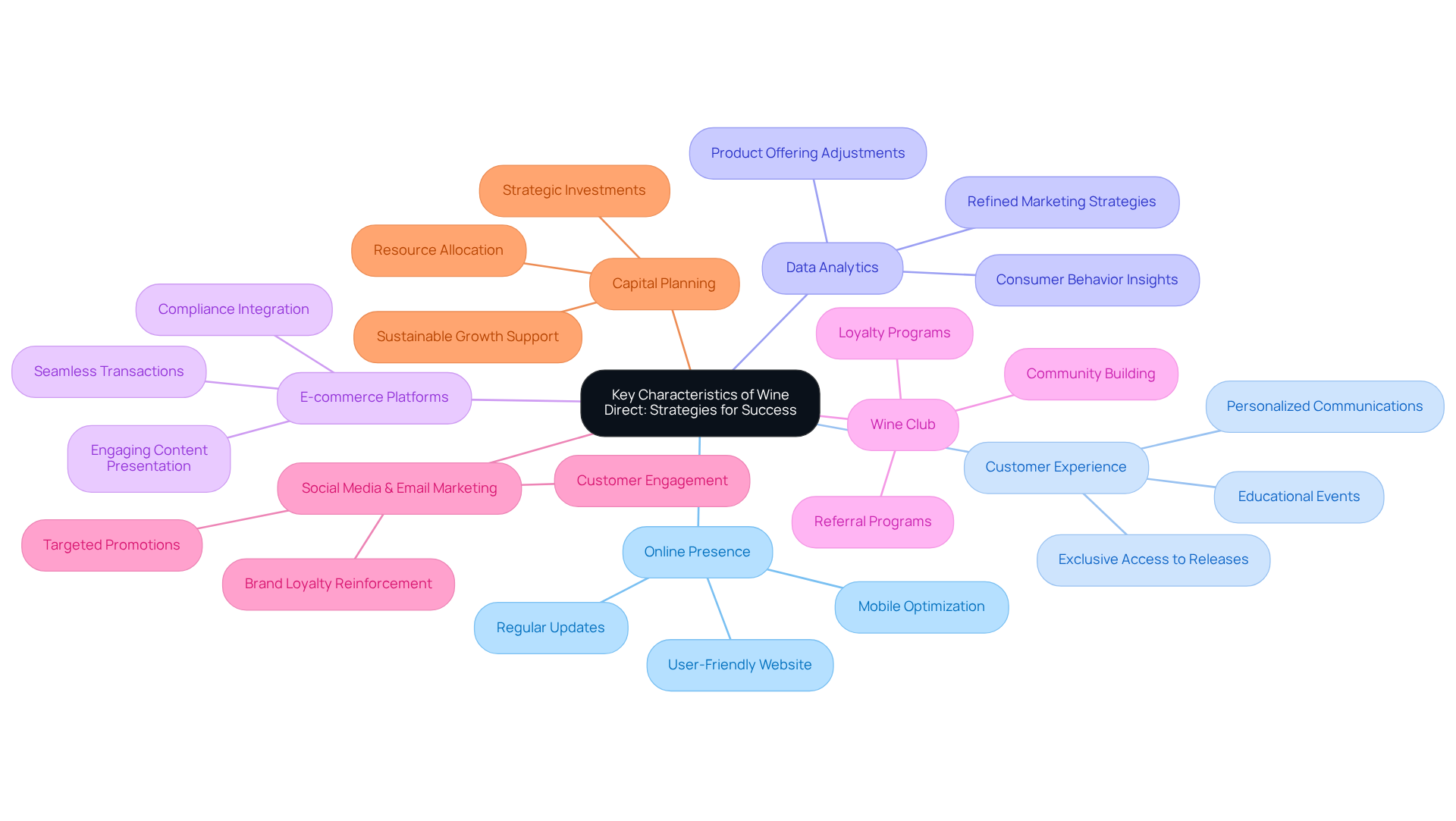Overview
The article elucidates that 'Wine Direct' epitomizes the Direct-to-Consumer (DTC) model within the wine industry, wherein producers engage directly with consumers, circumventing traditional distribution channels. This innovative model not only fosters enhanced brand loyalty but also significantly boosts profitability by leveraging online platforms to offer personalized experiences and exclusive offerings. The remarkable growth in DTC sales, alongside the rising number of online wine purchasers, serves as compelling evidence of this trend's impact on the industry.
Introduction
The wine industry is experiencing a significant transformation as producers increasingly adopt the Direct-to-Consumer (DTC) model, enabling them to cultivate deeper connections with their customers. This strategy not only bolsters brand loyalty but also optimizes profit margins by bypassing traditional distribution channels. Yet, as vineyards navigate this shifting landscape, they encounter considerable challenges, ranging from regulatory hurdles to escalating shipping costs.
How can wineries effectively leverage the potential of DTC sales while overcoming these obstacles?
Defining Wine Direct: Understanding the Direct-to-Consumer Model
? It refers to , which represents a significant shift in the wine industry, where producers sell their products directly to consumers, effectively bypassing traditional distribution channels like wholesalers and retailers. This model not only fosters a direct relationship between producers and customers but also enhances brand loyalty while maximizing profit margins. By harnessing the power of online platforms, wineries can reach a wider audience, offer personalized experiences, and develop exclusive offerings such as wine clubs. The DTC model has become increasingly essential in addressing what is wine direct, particularly as consumer preferences evolve towards more personalized and engaging purchasing experiences.
underscores what is wine direct by establishing that promote consistent growth, effectively through proven strategies. Notably, establishments like Inman Family Wines have achieved 100% , which exemplifies what is wine direct, reflecting a broader trend where 27% of new wine club registrations stem from digital platforms. Furthermore, the number of online wine purchasers surged from 1.5 million to 4.1 million, underscoring the .
As vineyards navigate a competitive landscape, the DTC model, which illustrates what is wine direct, not only enhances profitability but also facilitates that resonate with today’s consumers. Industry experts assert, "Volume growth across the beverage alcohol industry is expected to experience continued constraint, and the DTC declines we’re seeing are a reflection of the overall market." This statement emphasizes the critical need for adaptation to evolving market dynamics while leveraging to seize growth opportunities.

The Evolution of Wine Direct: Historical Context and Market Impact
The practice of , often referred to as , began to gain significant traction in the late 20th century, particularly as various U.S. states enacted laws permitting vineyards to sell from their tasting rooms. This legislative shift was pivotal, enabling producers to establish and enrich their brand narratives.
The rise of and digital marketing has since propelled the model, which raises the question of what is wine direct as an essential component of the . Notably, the COVID-19 pandemic served as a major catalyst for this transformation, compelling many vineyards to adopt .
Consequently, DTC sales surged, with the channel valued at approximately $4.1 billion in 2023, accounting for nearly 70% of sales for the average small premium vineyard. This shift not only reflects evolving buyer behaviors but also underscores the resilience of DTC sales amidst broader market challenges.
Today, vineyards increasingly to enhance customer interaction, optimize operations, and secure greater profit margins, signifying a profound transformation in how consumers engage with wine brands.

Key Characteristics of Wine Direct: Strategies for Success
Effective strategies for vineyards are fundamentally anchored in a robust online presence, , and astute data analytics. A critical investment in is essential, as they facilitate seamless transactions and present engaging content that resonates with consumers. Furthermore, a well-organized can significantly bolster customer loyalty by providing exclusive access to limited releases and personalized communications, thereby nurturing a sense of community. Additionally, leveraging social media and email marketing enables vineyards to connect with customers more profoundly, reinforcing brand loyalty.
plays a pivotal role in understanding consumer behavior, allowing vineyards to fine-tune their product offerings and marketing strategies effectively. For example, establishments employing analytics to monitor customer preferences can refine their product selections and promotional tactics, resulting in heightened engagement and increased sales. Moreover, is vital to support these , ensuring that vineyards have the necessary resources to implement their strategies efficiently.
The importance of these methodologies is underscored by the remarkable growth experienced by businesses employing , evidenced by an for clients in 2020. By focusing on these essential elements and implementing transformative DTC strategies, producers can adeptly navigate the complexities of the DTC model and cultivate lasting relationships with their customers.

Challenges in Wine Direct: Navigating Obstacles to Success
The model, which embodies , presents significant advantages for vineyards, yet its implementation is fraught with challenges. Regulatory complexities, including the varying state laws that govern shipping and sales, complicate DTC operations. Vineyards must navigate intricate regulatory obligations that differ across regions, which can hinder their ability to connect with buyers effectively. Moreover, serve as a substantial barrier, often dissuading potential customers from making direct purchases. Indeed, shipping expenses have emerged as a crucial factor influencing purchasing decisions, with many consumers opting for local retailers instead.
In addition, the online marketplace is increasingly competitive, compelling vineyards to adopt to differentiate themselves. As consumer preferences evolve, sustaining customer engagement and loyalty in this crowded landscape requires ongoing effort and investment. Wineries must leverage to customize their messaging and enhance the buying experience, ensuring alignment with their target audience.
By proactively addressing these challenges and focusing on for debt, equity, or acquisition opportunities, vineyards can devise and bolster their DTC sales efforts. Notably, businesses like Nocking Point Wines have successfully refined their DTC strategies by exploring what is wine direct through personalized marketing techniques. By crafting and establishing , producers can transform casual buyers into devoted club members, fostering consistent growth. Ultimately, this proactive approach positions wineries for sustainable success in a dynamic market.

Conclusion
The Direct-to-Consumer (DTC) model signifies a transformative strategy for wineries, empowering them to forge direct relationships with consumers while circumventing traditional distribution channels. This paradigm shift not only boosts profitability but also cultivates brand loyalty, enabling wineries to offer personalized experiences and exclusive offerings. Grasping the essence of what wine direct entails is essential for producers aiming to excel in a rapidly evolving market landscape.
Key insights throughout this article illuminate the evolution of the DTC model, emphasizing its historical context, the influence of e-commerce, and the imperative for innovative marketing strategies. The remarkable surge in online wine purchases and the rise of sustainable DTC channels highlight the necessity of adapting to shifting consumer preferences. Moreover, the article underscores the vital characteristics of successful DTC wineries, including robust online platforms, customized customer experiences, and effective data utilization.
In light of these insights, it is crucial for wineries to adopt the DTC model as a strategic pathway for growth. By addressing challenges such as regulatory complexities and high shipping costs, and by harnessing data-driven marketing techniques, wineries can elevate their customer engagement and navigate the competitive landscape. The future of wine sales hinges on the ability to connect directly with consumers, fostering loyalty and driving sustainable success in a dynamic market.
Frequently Asked Questions
What does "wine direct" refer to?
"Wine direct" refers to the Direct-to-Consumer (DTC) model in the wine industry, where producers sell their products directly to consumers, bypassing traditional distribution channels like wholesalers and retailers.
What are the benefits of the DTC model for wineries?
The DTC model fosters direct relationships between producers and customers, enhances brand loyalty, maximizes profit margins, and allows wineries to reach a wider audience and offer personalized experiences.
How has consumer interest in wine direct sales changed?
Consumer interest in wine direct sales has increased, as evidenced by the surge in online wine purchasers from 1.5 million to 4.1 million and the fact that 27% of new wine club registrations come from digital platforms.
Can you provide an example of a winery successfully using the DTC model?
Inman Family Wines is an example of a winery that has achieved 100% DTC sales for multiple years, demonstrating the effectiveness of the DTC model.
What challenges does the beverage alcohol industry face regarding volume growth?
The beverage alcohol industry is expected to experience continued constraints in volume growth, and current declines in DTC sales reflect broader market dynamics, highlighting the need for adaptation and strategic capital planning.
How does the DTC model impact marketing strategies for wineries?
The DTC model facilitates innovative marketing strategies that resonate with today's consumers, helping wineries to adapt to changing preferences and enhance profitability.




